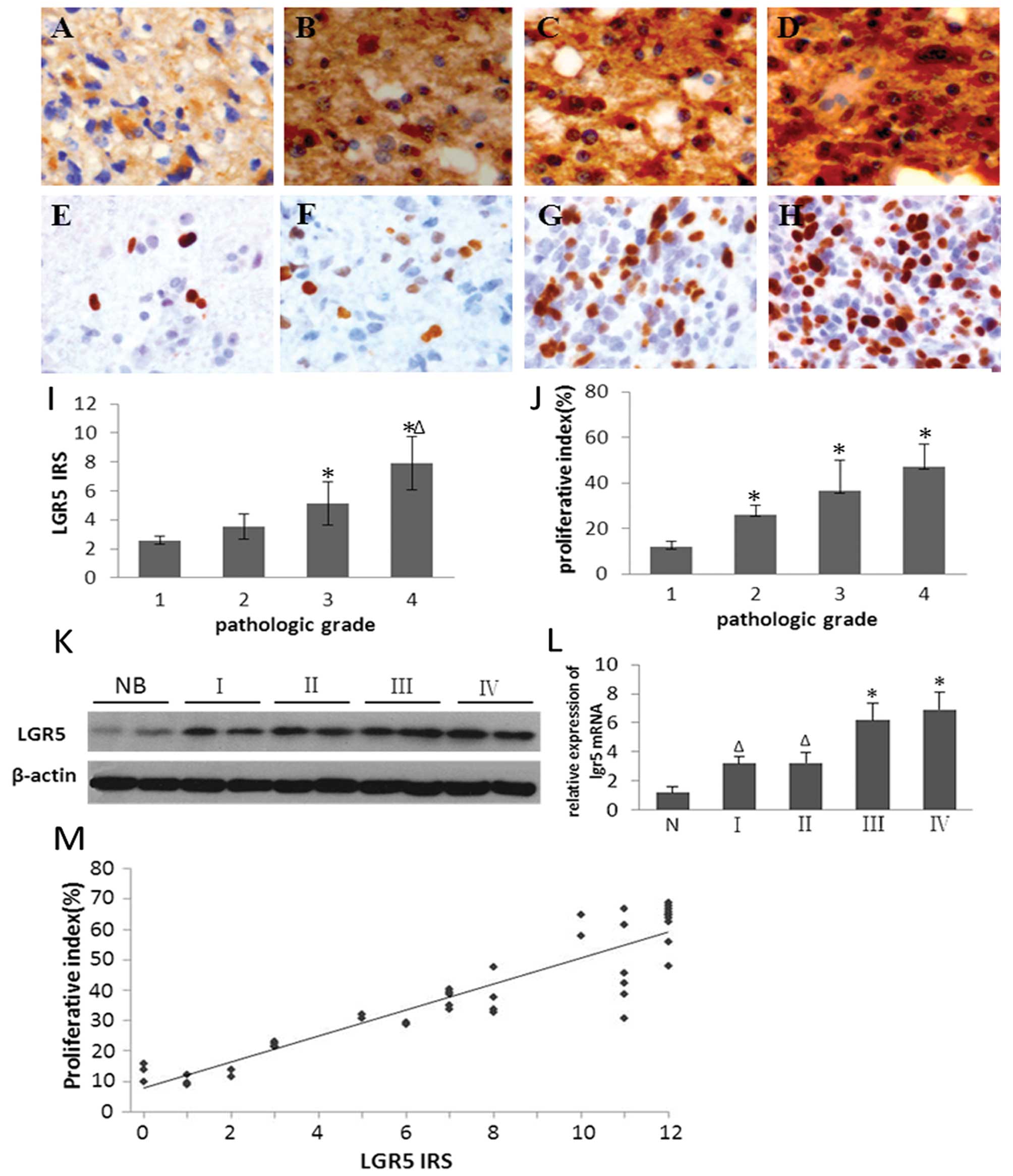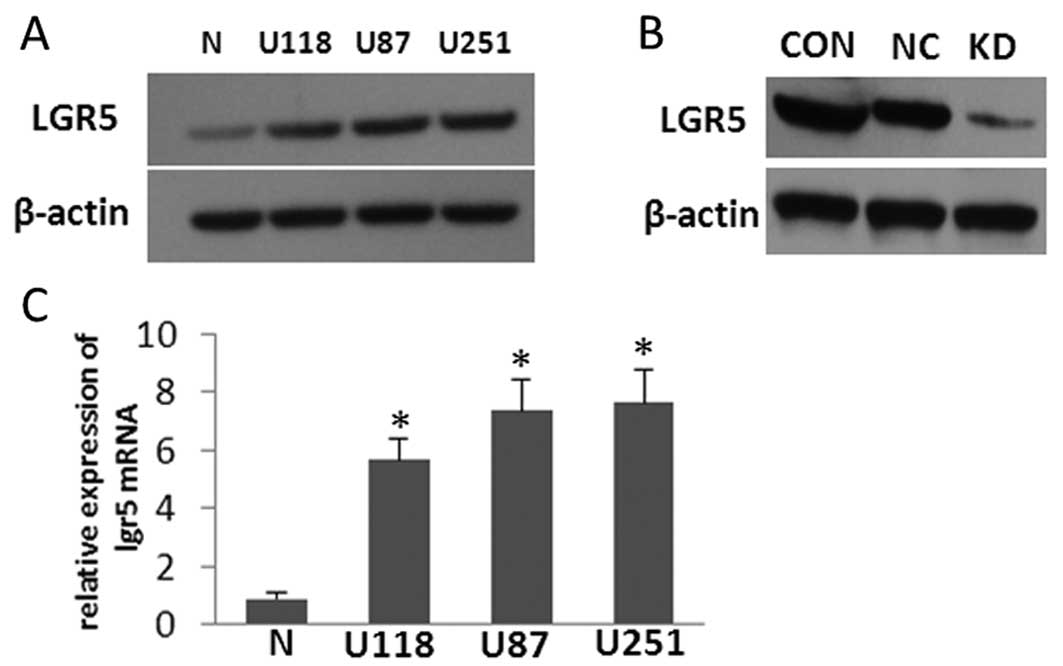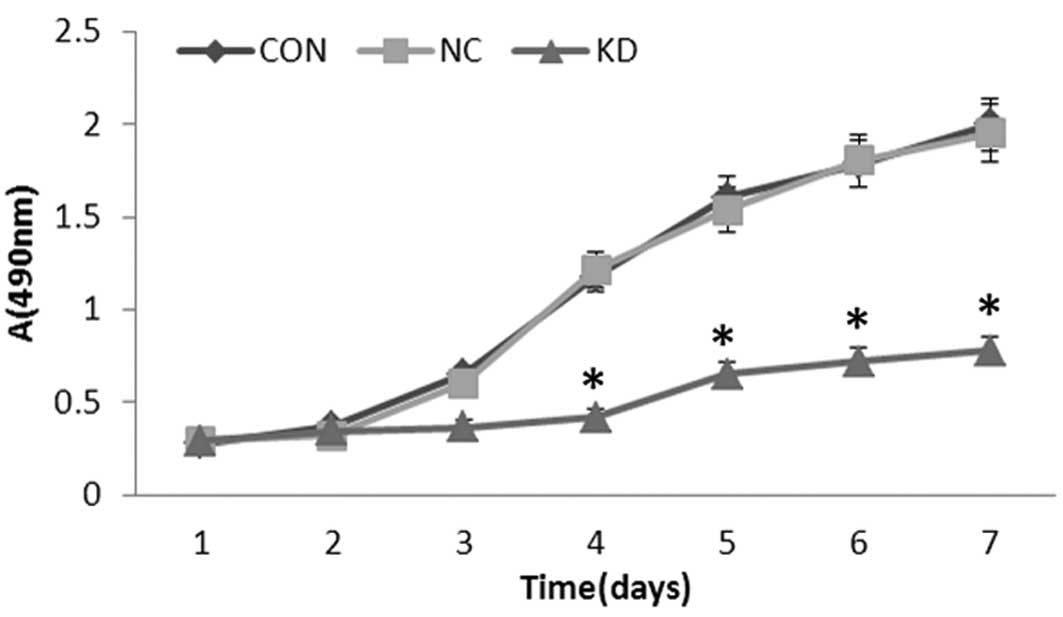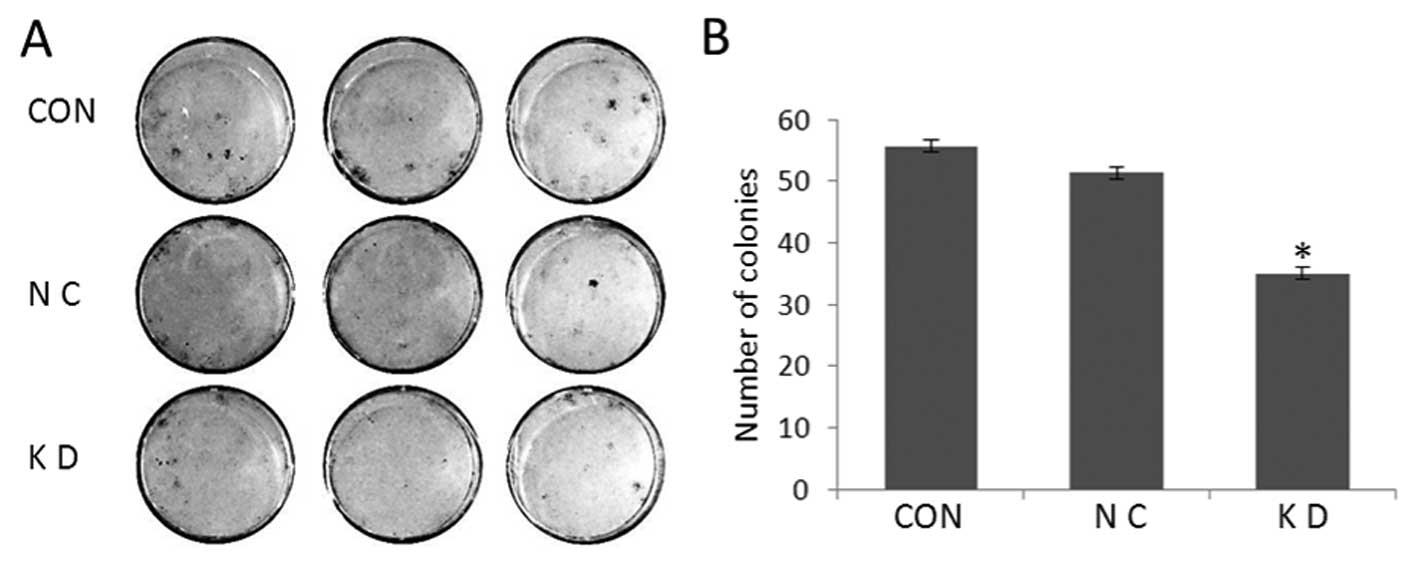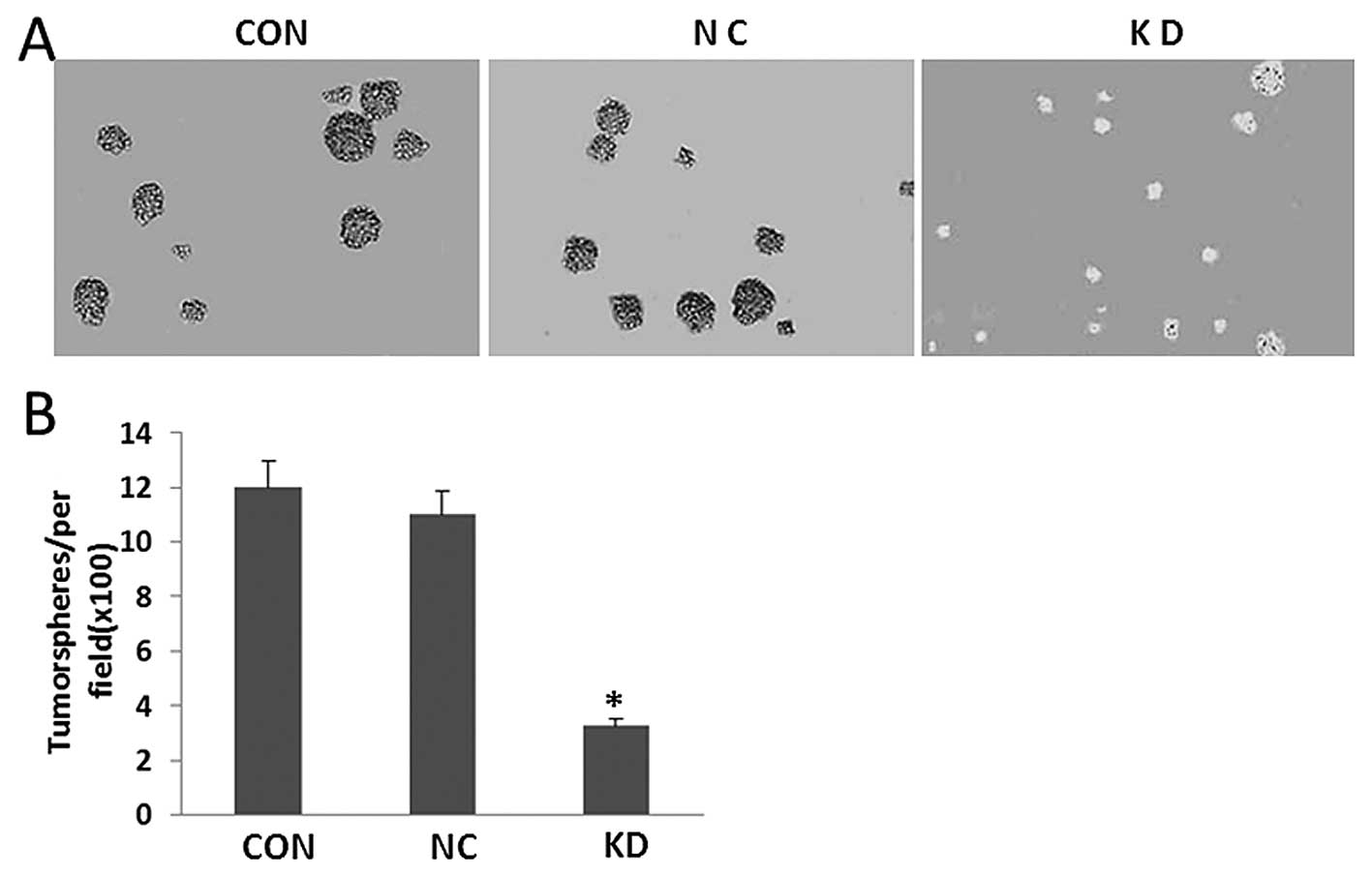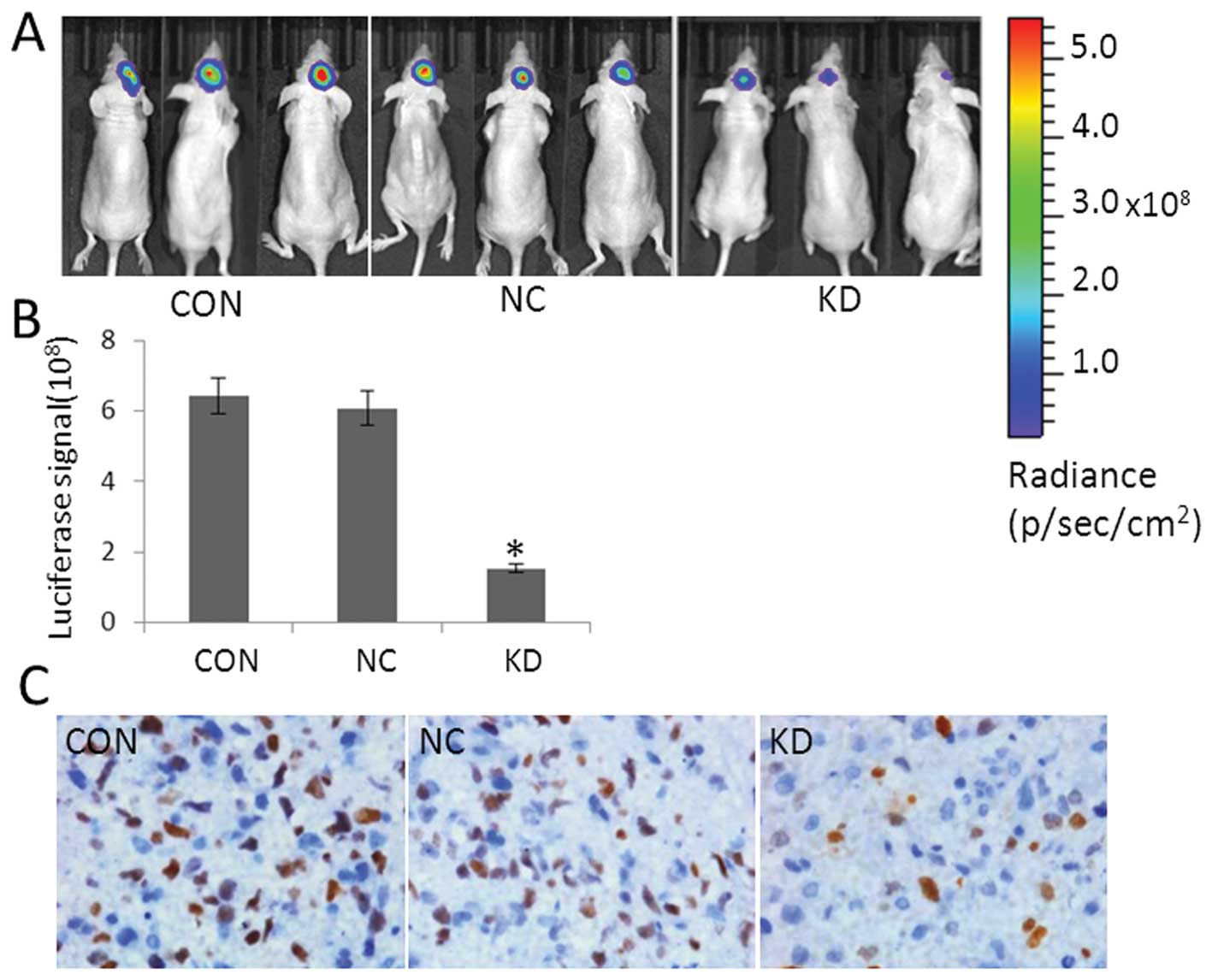|
1
|
Louis DN, Ohgaki H, Wiestler OD and
Cavenee WK: WHO Classifcation of Tumours of the Central Nervous
System. 4th edition. IARC Press; Lyon: 2007
|
|
2
|
Stupp R, Hegi ME, Mason WP, van den Bent
MJ, Taphoorn MJ, Janzer RC, Ludwin SK, Allgeier A, Fisher B,
Belanger K, Hau P, Brandes AA, Gijtenbeek J, Marosi C, et al;
European Organisation for Research and Treatment of Cancer Brain
Tumour and Radiation Oncology Groups; National Cancer Institute of
Canada Clinical Trials Group. Effects of radiotherapy with
concomitant and adjuvant temozolomide versus radiotherapy alone on
survival in glioblastoma in a randomised phase III study: 5-year
analysis of the EORTC-NCIC trial. Lancet Oncol. 10:459–466.
2009.
|
|
3
|
Mrugala MM: Advances and challenges in the
treatment of glioblastoma: a clinician's perspective. Discov Med.
15:221–230. 2013.PubMed/NCBI
|
|
4
|
Glinka A, Dolde C, Kirsch N, Huang YL,
Kazanskaya O, Ingelfinger D, Boutros M, Cruciat CM and Niehrs C:
LGR4 and LGR5 are R-spondin receptors mediating Wnt/β-catenin and
Wnt/PCP signalling. EMBO J. 12:1055–1061. 2011.PubMed/NCBI
|
|
5
|
Schuijers J and Clevers H: Adult mammalian
stem cells: the role of Wnt, Lgr5 and R-spondins. EMBO J.
31:2685–2696. 2012. View Article : Google Scholar : PubMed/NCBI
|
|
6
|
de Lau W, Barker N, Low TY, Koo BK, Li VS,
Teunissen H, Kujala P, Haegebarth A, Peters PJ, van de Wetering M,
Stange DE, van Es JE, Guardavaccaro D, Schasfoort RB, Mohri Y,
Nishimori K, Mohammed S, Heck AJ and Clevers H: Lgr5 homologues
associate with Wnt receptors and mediate R-spondin signalling.
Nature. 476:293–297. 2011.PubMed/NCBI
|
|
7
|
Barker N, van Es JH, Kuipers J, Kujala P,
van den Born M, Cozijnsen M, Haegebarth A, Korving J, Begthel H,
Peters PJ and Clevers H: Identification of stem cells in small
intestine and colon by marker gene LGR5. Nature. 449:1003–1007.
2007. View Article : Google Scholar : PubMed/NCBI
|
|
8
|
Barker N and Clevers H: Leucine-rich
repeat-containing G-protein-coupled receptors as markers of adult
stem cells. Gastroenterology. 138:1681–1696. 2010. View Article : Google Scholar : PubMed/NCBI
|
|
9
|
Barker N, Huch M, Kujala P, van de
Wetering M, Snippert HJ, van Es JH, et al: Lgr5+vestem
cells drive self-renewal in the stomach and build long-lived
gastric units in vitro. Cell Stem Cell. 6:25–36. 2010.
|
|
10
|
Barker N, Rookmaaker MB, Kujala P, Ng A,
Leushacke M, Snippert H, et al: Lgr5+vestem/progenitor
cells contribute to nephron formation during kidney development.
Cell Rep. 2:540–552. 2012.
|
|
11
|
Yui S, Nakamura T, Sato T, Nemoto Y,
Mizutani T, Zheng X, Ichinose S, Nagaishi T, Okamoto R, Tsuchiya K,
Clevers H and Watanabe M: Functional engraftment of colon
epithelium expanded in vitro from a single adult
Lgr5+stem cell. Nat Med. 18:618–623. 2012. View Article : Google Scholar : PubMed/NCBI
|
|
12
|
McClanahan T, Koseoglu S, Smith K, Grein
J, Gustafson E, Black S, Kirschmeier P and Samatar AA:
Identification of overexpression of orphan G protein-coupled
receptor GPR49 in human colon and ovarian primary tumors. Cancer
Biol Ther. 5:419–426. 2006. View Article : Google Scholar : PubMed/NCBI
|
|
13
|
Tanese K, Fukuma M, Yamada T, Mori T,
Yoshikawa T, Watanabe W, Ishiko A, Amagai M, Nishikawa T and
Sakamoto M: G-protein-coupled receptor GPR49 is up-regulated in
basal cell carcinoma and promotes cell proliferation and tumor
formation. Am J Pathol. 173:835–843. 2008. View Article : Google Scholar : PubMed/NCBI
|
|
14
|
de Sousa E, Melo F, Colak S, Buikhuisen J,
Koster J, Cameron K, de Jong JH, Tuynman JB, Prasetyanti PR,
Fessler E, van den Bergh SP, Rodermond H, Dekker E, van der Loos
CM, Pals ST, van de Vijver MJ, Versteeg R, Richel DJ, Vermeulen L
and Medema JP: Methylation of cancer-stem-cell-associated Wnt
target genes predicts poor prognosis in colorectal cancer patients.
Cell Stem Cell. 9:476–485. 2011.PubMed/NCBI
|
|
15
|
Simon E, Petke D, Böger C, Behrens HM,
Warneke V, Ebert M and Röcken C: The spatial distribution of LGR5
cells correlates with gastric cancer progression. PloS One.
7:e354862012. View Article : Google Scholar : PubMed/NCBI
|
|
16
|
Fukuma M, Tanese K, Effendi K, Yamazaki K,
Masugi Y, Suda M and Sakamoto M: Leucine-rich repeat-containing G
protein-coupled receptor 5 regulates epithelial cell phenotype and
survival of hepatocellular carcinoma cells. Exp Cell Res.
319:113–121. 2013. View Article : Google Scholar : PubMed/NCBI
|
|
17
|
Nakata S, Campos B, Bageritz J, Bermejo
LJ, Becker N, Engel F, et al: LGR5 is a marker of poor prognosis in
glioblastoma and is required for survival of brain cancer stem-like
cells. Brain Pathol. 23:60–72. 2013. View Article : Google Scholar : PubMed/NCBI
|
|
18
|
Buckner JC, Brown PD, O'Neill BP, Meyer
FB, Wetmore CJ and Uhm JH: Central nervous system tumors. Mayo Clin
Proc. 82:1271–1286. 2007. View Article : Google Scholar : PubMed/NCBI
|
|
19
|
Remmele W, Hildebrand U, Hienz HA, Klein
PJ, Vierbuchen M, Behnken LJ, Heicke B and Scheidt E: Comparative
histological, histochemical, immunohistochemical and biochemical
studies on oestrogen receptors, lectin receptors, and Barr bodies
in human breast cancer. Virchows Arch A Pathol Anat Histopathol.
409:127–147. 1986. View Article : Google Scholar
|
|
20
|
Guo G, Liu B, Zhong C, Zhang X, Mao X, et
al: FRAT1 expression and its correlation with pathologic grade,
proliferation, and apoptosis in human astrocytomas. Med Oncol.
28:1–6. 2010. View Article : Google Scholar : PubMed/NCBI
|
|
21
|
Carmon KS, Lin Q, Gong X, Thomas A and Liu
Q: LGR5 interacts and cointernalizes with Wnt receptors to modulate
Wnt/β-catenin signaling. Mol Cell Biol. 32:2054–2064.
2012.PubMed/NCBI
|
|
22
|
Scannell CA, Pedersen EA, Mosher JT, Krook
MA, Nicholls LA, Wilky BA, Loeb DM and Lawlor ER: LGR5 is expressed
by Ewing sarcoma and potentiates Wnt/β-catenin signaling. Front
Oncol. April 15–2013. View Article : Google Scholar
|
|
23
|
Yamashita Y, Kasugai I, Sato M, Tanuma N,
Sato I, Nomura M, et al: CDC25A mRNA levels significantly correlate
with Ki-67 expression in human glioma samples. J Neurooncol.
100:43–49. 2010. View Article : Google Scholar : PubMed/NCBI
|
|
24
|
Walker F, Zhang HH, Odorizzi A and Burgess
AW: LGR5 is a negative regulator of tumourigenicity, antagonizes
Wnt signalling and regulates cell adhesion in colorectal cancer
cell lines. PloS One. 6:e227332011. View Article : Google Scholar : PubMed/NCBI
|
|
25
|
Rath BH, Fair JM, Jamal M, Camphausen K
and Tofilon PJ: Astrocytes enhance the invasion potential of
glioblastoma stem-like cells. PLoS One. 8:e547522013. View Article : Google Scholar : PubMed/NCBI
|
|
26
|
Chen J, Li Y, Yu TS, McKay RM, Burns DK,
Kernie SG and Parada LF: A restricted cell population propagates
glioblastoma growth after chemotherapy. Nature. 488:522–526. 2012.
View Article : Google Scholar : PubMed/NCBI
|
|
27
|
Gopinath S, Malla R, Alapati K, Gorantla
B, Gujrati M, Dinh DH and Rao JS: Cathepsin B and uPAR regulate
self-renewal of glioma-initiating cells through GLI-regulated Sox2
and Bmi1 expression. Carcinogenesis. 34:550–559. 2013. View Article : Google Scholar : PubMed/NCBI
|
|
28
|
Bao S, Wu Q, McLendon RE, Hao Y, Shi Q,
Hjelmeland AB, et al: Glioma stem cells promote radioresistance by
preferential activation of the DNA damage response. Nature.
444:756–760. 2006. View Article : Google Scholar : PubMed/NCBI
|
|
29
|
Leushacke M and Barker N: Lgr5 and Lgr6 as
markers to study adult stem cell roles in self-renewal and cancer.
Oncogene. 31:3009–3022. 2011. View Article : Google Scholar : PubMed/NCBI
|
|
30
|
Carmon KS, Gong X, Lin Q, Thomas A and Liu
Q: R-spondins function as ligands of the orphan receptors LGR4 and
LGR5 to regulate Wnt/β-catenin signaling. Proc Natl Acad Sci USA.
108:11452–11457. 2011.PubMed/NCBI
|















